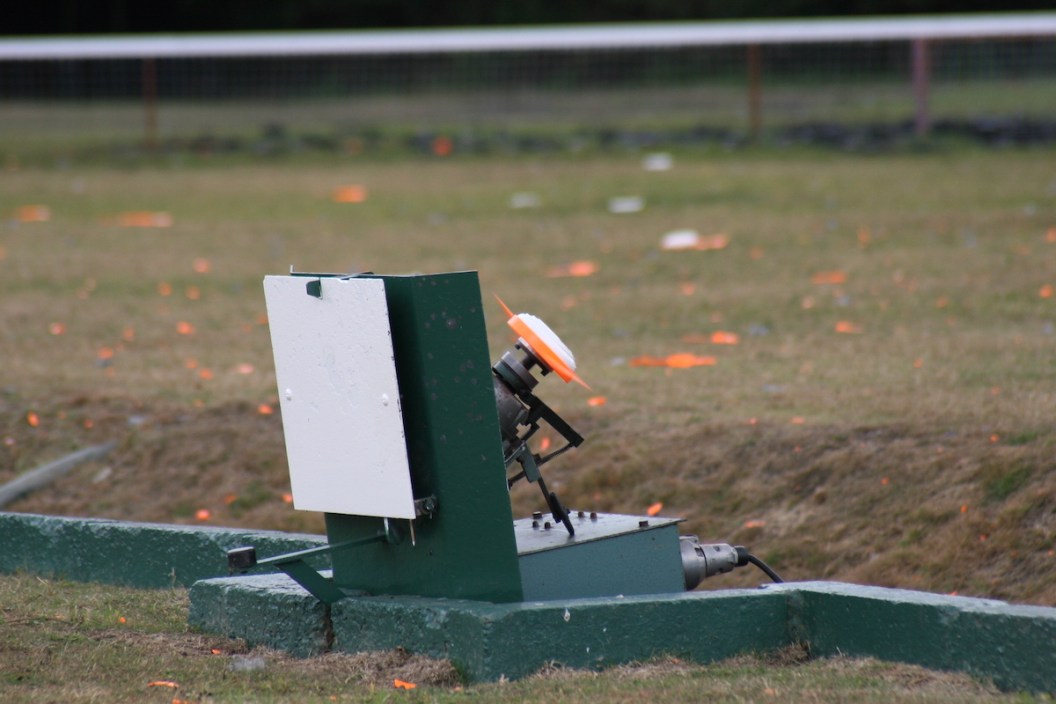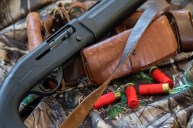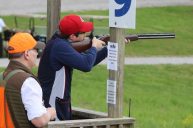Don't feel bad if you haven't heard of helice shooting. Many sportspeople have never heard of it either. This game combines the unpredictable nature of bird hunting with shooting clays. It's wild fun that will challenge even the most disciplined skeet and trap shooters. Here is how it's done.
Helice Shooting 101
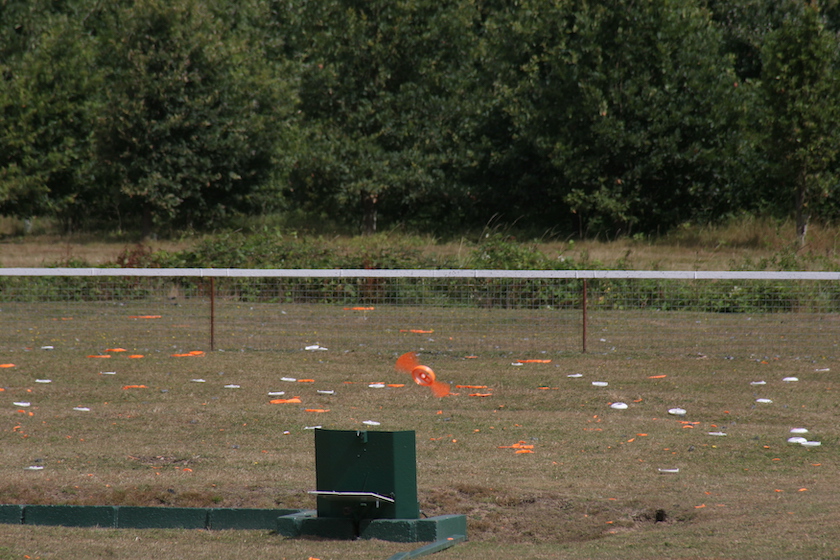
FieldsportsChannel TV via Flickr
On the surface, helice looks pretty similar to your standard clay pigeon shoot, but the main difference is that you've got a target made of plastic pieces: the witness cap and the propellors.
The witness cap is shaped much like a clay pigeon. The main difference is that this witness cap fits onto an orange piece with plastic propellers. To some, the whole setup looks like a clay pigeon from hell.
It's this unique target design that makes helice so much fun. This is the closest you can get to live bird shooting without heading afield with a dog beside you and a gun in your hand. A helice target flies incredibly randomly and at high speeds, which means much of the shooting is done on pure instinct.
Just as unique as the target is the setup, which plays heavily into the rules of this game. The layout features a shooting stand not unlike what you'd find with clay shooting. The big difference is that there are five launchers, each holding two targets. But shooters only take on five targets at a time. The reason for those five extras will make sense in a minute. It should be noted there is also a variant that utilizes seven launchers.
Like clay shooting, once in the shooting stand, the shooter calls pull to release the targets. You get two shots to hit each target. This is where helice varies dramatically from any clay shooting.
The machine rotates the helice targets rapidly, and once released, thanks to those plastic wings, they take off on an unpredictable flight path that any clay target can't replicate.
Some targets go high and fast, while others stay low to the ground. Unlike sporting clays, you never know which way a helice target is going. It's easy to see why they made this style because it closely resembles hunting live pigeons or doves.
The basic idea behind the whole thing is that the launching of the targets is entirely randomized. You never know which one is going to launch next.
Remember that extra target on each machine? That's so savvy shooters can't predict the next launch via the process of elimination. All in all, it's a pretty clever design for a game that even professionals will find challenging.
How Helice is Scored
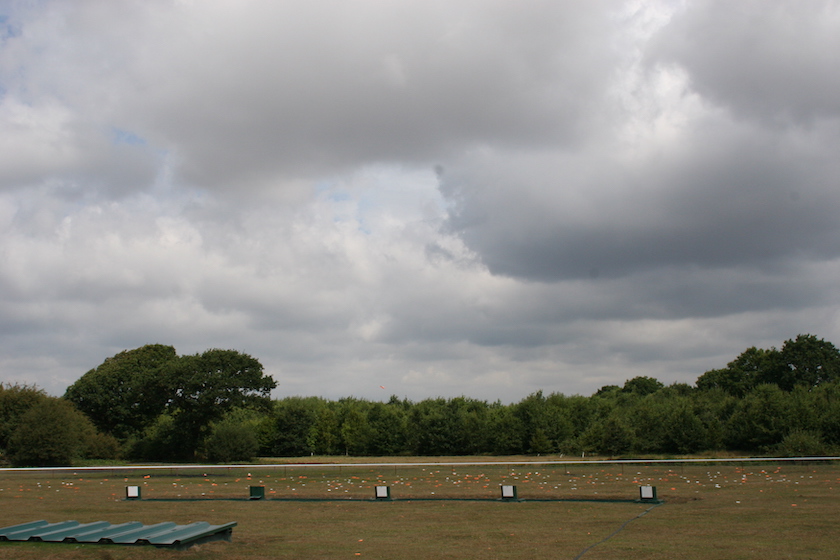
FieldsportsChannel TV via Flickr
Helice varies greatly from trap or skeet in that you're not just trying to hit the plastic target. When you watch videos of helice, you might notice a semicircular fence in the back of the helice ring. This fence isn't there randomly. It comes into play in the game. To score a hit, you don't just have to hit the target. It would be best if you separated the witness cap from the propeller portion, and the witness cap must fall inside the fence to count.
That means you can score a hit on a target, but if the witness cap separates and falls over the back of the fence, you're out of luck. There are also times when the witness cap doesn't separate at all. If it doesn't, that's an unfortunate miss by helice standards. You also can't shoot the target once it crosses the fence.
It is little wonder most shooters who try helice describe it as one of the most humbling shooting games you can try. It's hard enough to hit such an erratic, fast target, but there are so many other intangibles in play that you can do little to change. A match consists of just 30 targets, but a perfect score is infrequent, even with professional shooters, because of the unpredictable nature of the targets.
Most matches take an entire day to complete, longer if you have a lot of shooters. You may only be shooting 30 targets, but as far as shotgun sports go, you'd better set aside some time for the competition.
Helice Shooting Equipment
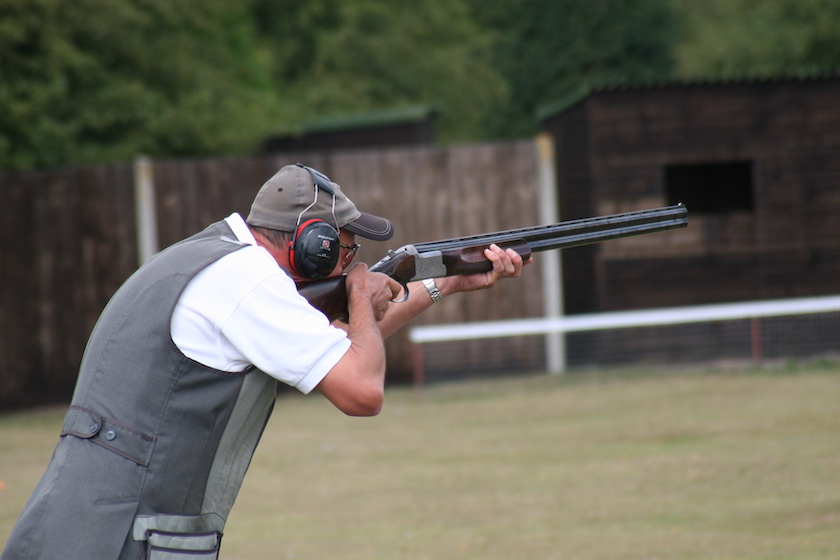
FieldsportsChannel TV via Flickr
Shooters get two shots at each target, so the most popular helice gun is usually an over-and-under shotgun. Some people use semi-autos, but over-and-under is generally thought of as the only gun fast enough for helice because each target is only in the air for a few seconds.
Under U.S. Helice Association rules, the largest gun you can use is a 12 gauge, and you're limited to factory-load shells (Sorry to all the reloaders out there).
Most helice shooters use a setup like what they'd use for bird hunting because that's what this most closely resembles. Many shots are at a distance, so that you might want a tight choke, but preference varies from shooter to shooter.
You'll want a shotgun with a fast and smooth swing because you won't have much time to think about your form once the birds start flying.
Where to Go Helice Shooting
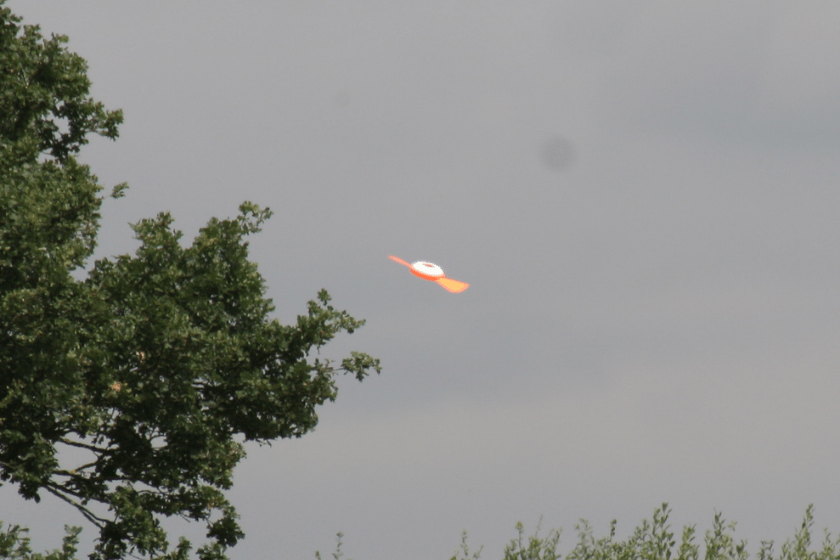
FieldsportsChannel TV via Flickr
Unfortunately for most of us, helice shooting is much more prevalent in Europe than here in the United States. A more significant challenge than the game is finding a place to shoot! The machines and targets are expensive, so many gun clubs don't have a setup.
The U.S. Helice Association only lists 16 helice ranges in only seven states. Texas leads the way with five of them. Of course, that doesn't mean there aren't more, but you might have to do some asking around to find one.
If you want to add a helice setup to your local club, you're in for another challenge. While you can find the targets for sale online, it's tough to find the launchers for purchase at all. You'll need to be resourceful to bring this game to your local area.
The good news is, if you find a place to shoot, it's a great alternative to trap and skeet shooting for shooters who have gotten bored of those types of competition. Also, it's an excellent way to prep for the upcoming bird-hunting seasons!
This article was originally published on January 18, 2022.
For more outdoor content from Travis Smola, follow him on Twitter and check out his Geocaching and Outdoors with Travis Youtube channels.
READ MORE: BEST BUDGET-FRIENDLY PELLET GUNS FOR HUNTING AND TARGET SHOOTING
